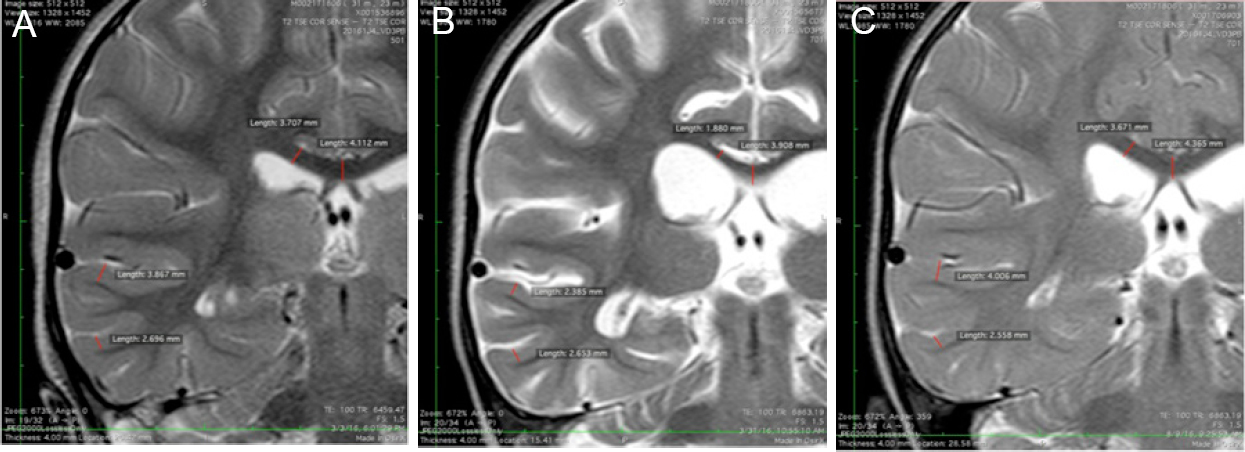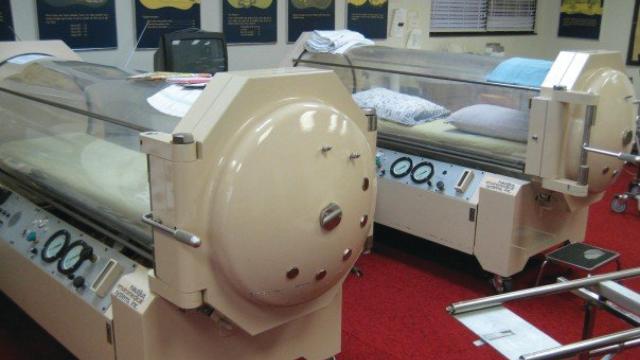Fifteen minutes beneath 5C water is a crippling experience, and possibly death sentence for a two-year-old. These are just not conditions that children generally survive. But a controversial treatment may have played the role in saving Eden Carlson’s life.
Image: OpenStax College/Wikimedia Commons
The girl fell into her family’s pool in February 2016, according to Newsweek, and showed up nearly comatose at the hospital in Arkansas with a body temperature of 29.5C. After 35 days in the hospital, she was still unresponsive, immobile, and showed injury to her brain’s grey and white matter, the outer and inner parts. So Dr Paul G. Harch from the Louisiana State University School of Medicine gave her pure oxygen gas to breathe, both at regular pressure and in a higher-pressure chamber.
After 162 days and 40 sessions in the high-pressure hyperbaric oxygen treatment (HBOT) chamber, Harch reported that Carlson could walk and that much of the brain damage had reversed. The case report does not mention follow up studies, but included this video:
This is just a single case report, published in the journal Medical Gas Research by an advocate for HBOT therapy — so there’s reason to be sceptical. It is not a clinical comparison of many cases, and it does not compare HBOT to an alternative or to existing treatments. But it would appear that in this case, the therapy could have indeed led to a reversal of the girl’s brain damage.
HBOT remains a controversial therapy. It has proven beneficial in treating gas poisoning, certain infections and “the bends”, symptoms faced by divers who experience pressure changes too quickly and suffer from gas bubbles in their body. Flawed studies have demonstrated there might be a possible benefit to those with chronic wounds, such as foot ulcers in diabetic patients. But Harch’s own website calls it “a proven alternative medicine“. The treatment has been suggested for other neurological ailments, and while there are anecdotes, there’s scant evidence of its effectiveness.

MRI 3, 31 and 162 days after drowning (Image: Paul Harch)
The FDA warns that HBOT hasn’t been established as a safe or effective treatment for Alzheimer’s, depression, Bell’s Palsy, sports injuries, or a long list of other ailments that some claim the therapy works for. The FDA worries that patients might forego the proper therapies in favour of HBOT, potentially making the conditions worse. Nor does the FDA recommend HBOT for autism, another common claim.
It’s pretty clear from the video that Eden Carlson has recovered. It’s likely that HBOT has played a role. But science, especially medical science, is slow-moving, and it takes a while for new treatments to be approved. In the mean time, folks might recommend such treatments for ailments that they don’t actually treat, or for which the evidence isn’t sufficient. Just look at gut microbiome research, another field where the claims seem to be moving faster than the science.
In all these cases, the best you can really do is say, “Wow, that’s incredible.” But HBOT will probably continue to be a controversial therapy until the evidence catches up.
[Medical Gas Research via Newsweek]
